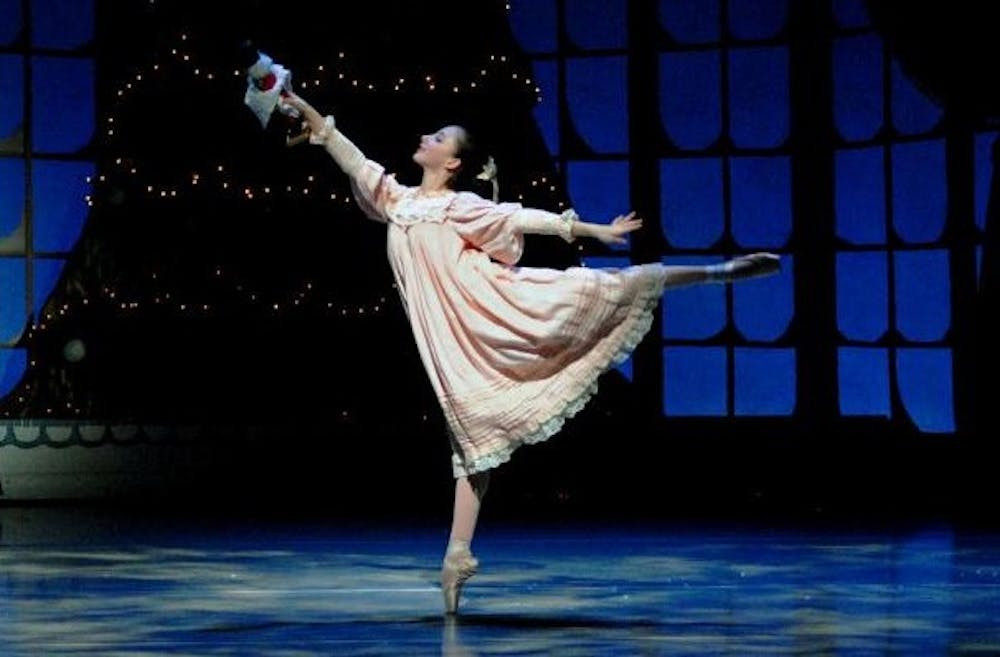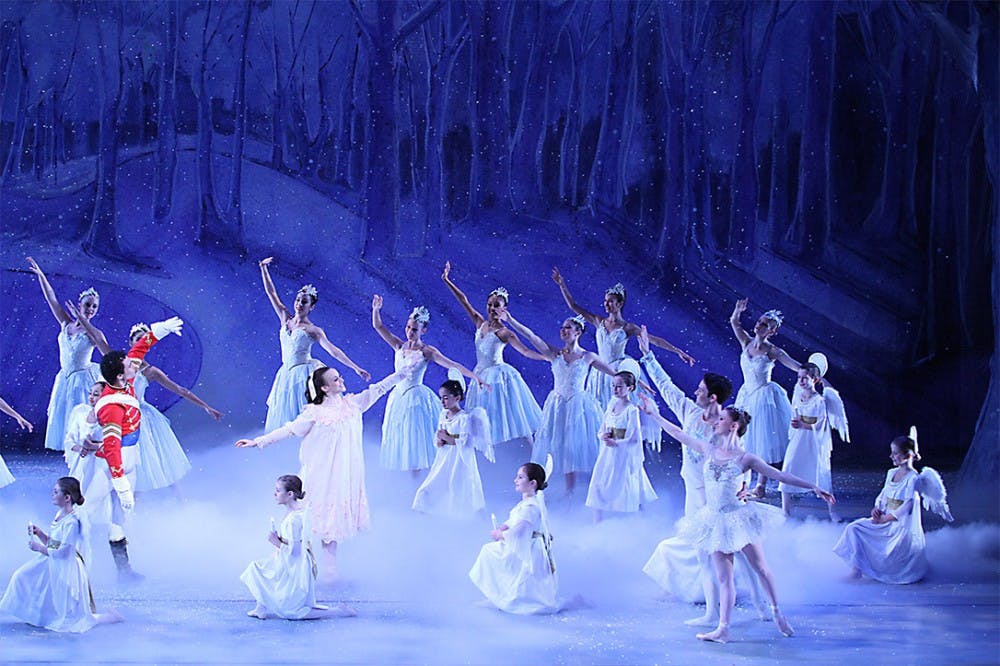The holiday season is a time for nostalgia. It’s a time for curling up in your softest blanket, wrapping your hands around a mug of hot chocolate, and watching the same movies you’ve watched every year since birth. The month of December has a strange, universal déjà vu. As your neighbors hang their same old Christmas lights and every department store begins to decorate in red and green, you see a world made timeless. A world you’ve visited every year for as long as you can remember.
This world is brought to the stage — made real by tutus and dancing mice and swirling snowflakes — in one of the most iconic ballets of all time: Tchaikovsky’s “The Nutcracker.” According to The New York Times, this single holiday production can account for up to 40 percent of an established ballet company’s yearly revenue. The ballet is a staple of the winter season, telling the story of a young girl whose mysterious Christmas gift, the titular Nutcracker, whisks her on an adventure through a magical land of evil rats and dancing sugarplums. From Nov. 24 through 26, the American Repertory Ballet gave this show a home here in Princeton, New Jersey, on the McCarter Theatre’s stage.
We got in touch with ARB’s Artistic Director, Douglas Martin, to get a behind-the-scenes perspective on exactly how a company approaches such a familiar, beloved ballet.
The Daily Princetonian: With such a frequently performed show as “The Nutcracker,” what sort of pressure does the company feel to hold to tradition as far as design and choreography? Do you feel like such a holiday staple is an opportunity for innovation? How does this production find a balance between those two elements?
Douglas Martin: “The Nutcracker” is the great American holiday tradition, and the vast majority of companies stick to the Victorian ideal, as the show itself is not considered just a ballet tradition but a holiday show that attracts people from all walks of life and traditionally kicks off the holiday season. Choreographically, we are free to design the show to our liking, and small changes are made every year with more major changes happening intermittently. Some companies have experimented with the story idea, time and location, setting and choreography, and, with the cost of a new production ranging from $200,000 to $5 million, the risks can be substantial. Creating high quality artistic shows is a marriage of art and business. Every show, no matter how wonderful, needs refreshing and updating and occasionally a completely new take on story and design. Some of these decisions are driven by creativity and some by financing.


DP: What was the development process like for this production?
DM: ARB started creating a completely new production seven years ago, completing the full build this season. As we go forward, the design elements first created will be the ones we replace first in the near future, as the life of these pieces is about 10 to 12 years. There is an extreme amount of wear and tear on the production elements in this show while doing 23 shows, traveling to several cities, and all of the packing and unpacking, folding, hanging and scene changes, not to mention up to five casts using the costumes.
DP: Do you find that the typical audience for “The Nutcracker” leans towards families with young children, or is it mostly appreciated by an older audience?
DM: The appeal of “Nutcracker” is universal, encompassing all ages and societal makeups. The show is not about age or ethnicity or religion background; it is about community and family. It reminds us to slow down, come together, and enjoy the season and joyous holiday spirit.

DP: What was the role of designers in the making of “The Nutcracker?” How do individual designers put their own unique spin on such an iconic piece?
DM: Choosing a scenic and costume designer — sometimes the same person, but not always — is like choosing an artist to paint your portrait. I started by deciding what I wanted for the overall look of the scenery and costume design. We looked at the work of several designers to see whose work matched our design concepts and then chose an artist. The costume design is part of the same process, and all of the color schemes need to be coordinated, as well as the period.
DP: What was it like having a married couple (Anna Porter Wilkes-Davis and Journy Wilkes-Davis) play the Sugar Plum Fairy and the Cavalier this year?
DM: Having danced the role with my wife, I didn't find it unusual at all. Our Executive Director has also danced many roles with her husband, and it is not so unusual in the dance world. It is helpful when the couple dances well together and has a good working rapport. The dancers dedicate their lives to their careers, and for some couples, it is wonderful to share their careers with their life partner, and for others, it is a separate endeavor. I loved dancing with my wife, and we had a brilliant partnership. The experience can be wonderful, but the professional relationship on stage is key.
DP: What is your personal favorite part of the show?
DM: I look forward to seeing the performances the most. I see the show every working day during the season, so I look forward to the individual performances. I love to see the dancers excel, and I enjoy watching the evolution of the performance during the season. Each dancer evolves and grows, bringing more confidence and artistic expression to their roles with each performance.








